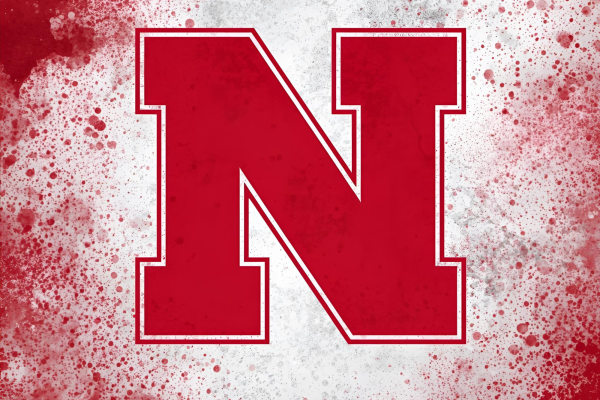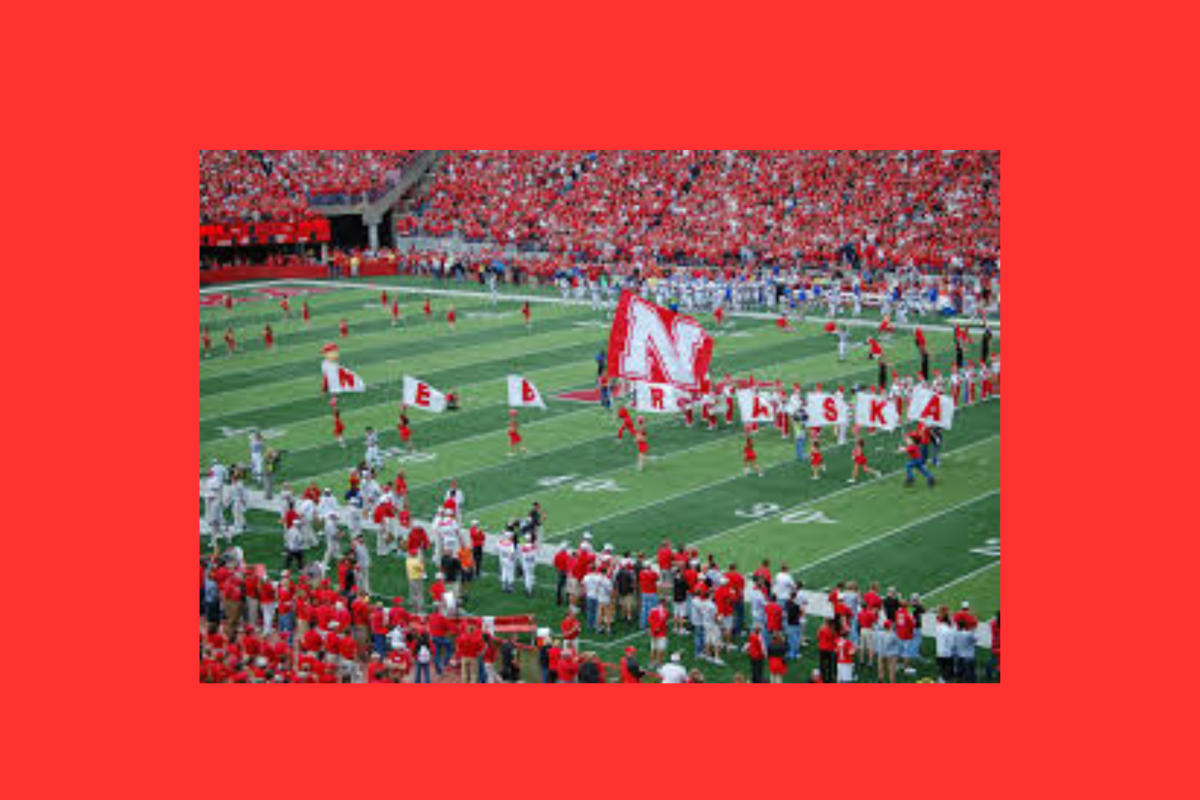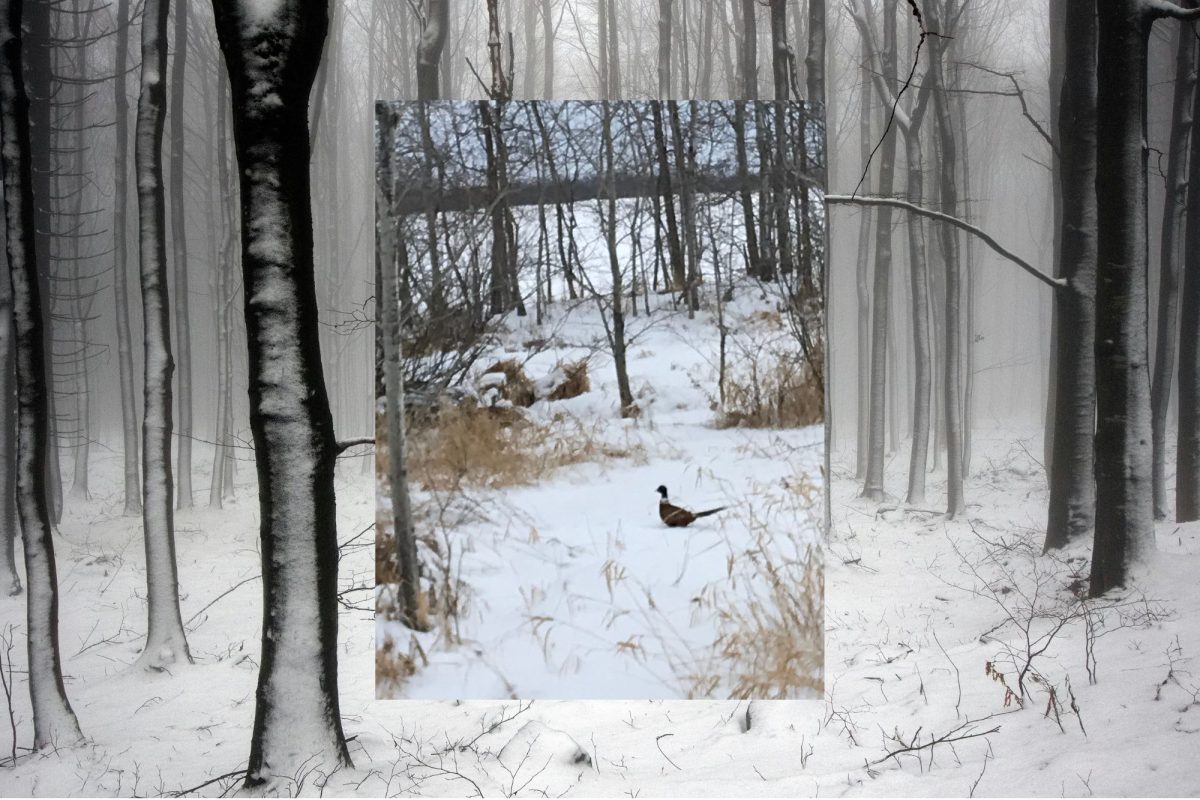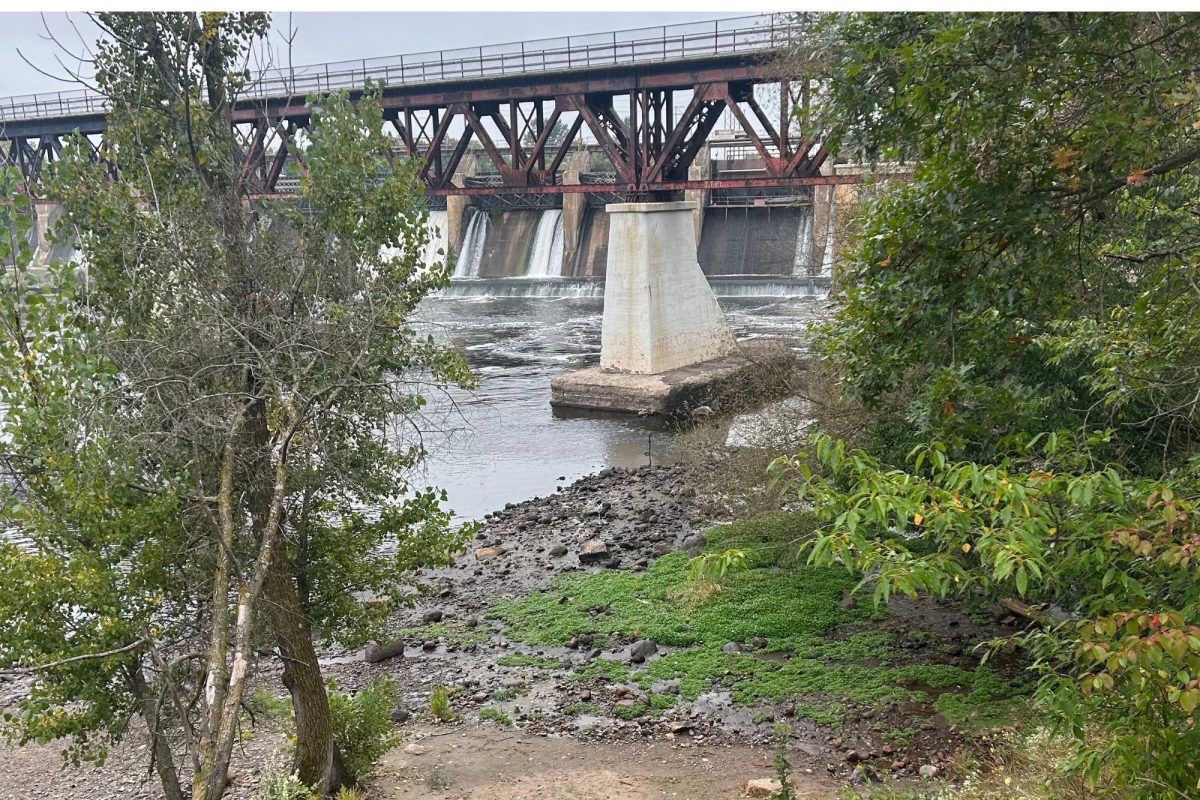
Nebraska football has been in decline since the early 2000s, and fans have been hoping for a turnaround for a long time.
Nebraska has been at its lowest point in a long time. Since 2018, Nebraska has been 34-51, and until this past year, it had not been to a bowl game in nearly ten years. Although Nebraska has been in a lull, it wasn’t always like that. To understand why Nebraska declined to its current state, we need to dive into the history books and analyze not just what went wrong, but also what went right for the program.
The 50s
In the 1950s, Nebraska was an average program at best. Throughout the 50s, Nebraska recorded a record of 39-58-3. They only had one winning season, which was in 1950. Despite the rough decade, Nebraska did have one huge upset. It was Halloween 1959, and Nebraska was to play Oklahoma. Oklahoma had won 74 straight conference games, and it ended that night in Lincoln. Nebraska took the lead 25-14 late in the fourth quarter, and despite a late touchdown by Oklahoma, Nebraska held on to win the game 25-21, possibly the greatest upset in Nebraska’s history. Despite this huge win, head coach Bill Jennings could not turn the program around. Since beginning at Nebraska in 1957, he ended it with a record of 15-34-1. Jennings was fired 2 years after the big upset. Jennings was not a success at Nebraska. But in 1962, Nebraska hired a coach who would set the stage for Nebraska football to become a powerhouse for the next 3 decades.
The Bob Devaney Era
The coach’s name was Bob Devaney, who previously coached at Wyoming. Devaney changed the culture of Nebraska into a winning one. He immediately found success, and throughout the 60s, Nebraska had consistent winning seasons. Including 6 bowl appearances, winning three. After the 1969 season, Nebraska took a significant leap forward, and fans were excited for a possible shot at a national championship. The 1970 Nebraska football season was by far the best in the school’s history up to that point. The big story of the team was their defense. The defense was commanded by defensive coordinator Monte Kiffin, who would go on to be one of the best defensive coordinators in NFL history. Nebraska ran through the regular season undefeated, with only one tie against USC. Despite this, Nebraska was ranked #3 in the polls. They went into the Orange Bowl against #5 LSU. Nebraska won 17-12. With #1 Texas and #2 Ohio State losing their bowl games, Nebraska won the AP Poll and claimed its first national championship in the school’s history.
The 1971 team came back even better than the 1970 team. With many starters returning from the previous season, they were in shape to go back-to-back. The offense was led by quarterback Jerry Tagge, I-back Jeff Kinney, and wingback Johnny Rodgers, who would go on to win the Heisman Trophy the next year. The defense, once again, was the backbone of the team. Led by middle guard Rich Glover, defensive tackle Larry Jacobson, and defensive end Willie Harper, the defense only allowed 8.2 points per game. The Cornhuskers destroyed every opponent they played up until the last game of the regular season. Their rival, Oklahoma, was ranked number 2, and Nebraska was ranked number 1. This game was one of the most hyped up games in college football history. The game was close the whole way through. Thanks to an amazing punt return touchdown in the first quarter by Johnny Rodgers and Jeff Kinney’s four rushing touchdowns. Nebraska pulled away 35-31. This game is often dubbed “the game of the century”. Nebraska took that momentum into the Orange Bowl against Alabama. The Crimson Tide never stood a chance, as Nebraska’s defense shut down Alabama’s wishbone offense. The final score was 38-6, giving Nebraska its second National title. The 1971 team is considered one of the best college football teams to ever touch the gridiron.
The Golden Years
After the 1972 season, Bob Devaney retired. He named his assistant and offensive coordinator, Tom Osborne, the new head coach. Osborne had big shoes to fill, but he filled them up and overflowed them. Osborne’s first seven years were successful. Winning 9 or 10 games each year. However, they could never get past Oklahoma, who was the powerhouse of the ’70s. But Osborne’s philosophy worked, as they maintained consistency each year. But he was not satisfied, as they could not for the life of them beat Oklahoma. This is when Osborne changed the Offense. Osborne switched to a triple option offense. When run well, it was nearly impossible to stop. However, this required a quarterback who could run well, in contrast to Nebraska’s past quarterbacks. In 1979, Osborne made the switch. And had Jeff Quinn, a fast quarterback who Osborne was looking for, control the new offense. He ran it well, and in 1981, he passed the reins to Turner Gill, who ran it even better than Quinn did. Nebraska was set up for success for the next 2 decades.
The 80s were when Nebraska had some of its best teams. In 1982, Osborne had his best season yet, winning 12 games. With many returning starters for the next year, hopes were high for a national championship run. 1983 was one of the more exciting seasons for Nebraska, especially its offense. Nicknamed the scoring explosion, their offense averaged 52 points per game. Their offense seemed unstoppable. Led by Gill, Wingback Irving Fryar, and Heisman trophy-winning I-back Mike Rozier, the Huskers rolled through the regular season with ease and were to face the Miami Hurricanes on their home field in the Orange Bowl. Nebraska was the clear favorite, but Miami surprised everybody. Nebraska was not ready for Miami’s speed, and by the time Miami led 17-0 after the first quarter, Nebraska was playing catch-up and could never really recover. However, they did fight back and make it a close game. In the final minutes of the fourth quarter, Nebraska scored a last-minute touchdown with backup I-back Jeff Smith to make the score 31-30. Then, one of the most controversial decisions in the history of college football happened. Back then, overtime didn’t exist, so if Nebraska kicked the extra point, it would end in a tie and Nebraska would almost certainly win the National Championship. But instead, Osborne wanted to win the game outright and went for two. They ran a pass play that was knocked away by a Miami defender. Nebraska had lost the game, spoiling their chance of a national championship.
Throughout the 80s, despite continued success, Osborne came to be known as the coach who couldn’t win the big game. Despite having 3 bowl wins during the decade, fans criticized Osborne. This continued during the early 90s. And from 1987 to 1993, Nebraska lost seven straight bowl games. In 1994, however, things changed. With players such as I-back Lawrence Phillips and Outland Trophy-winning right tackle Zach Weigert leading the offense. Osborne and the Huskers were determined to finally win it all. Despite star quarterback Tommie Frazier missing most of the season with blood clot issues, Nebraska rolled to an undefeated record in the regular season. But they were up against their familiar foes in the Orange Bowl, Miami. They had lost to them 3 straight times since the 1984 game. Miami was the favorite to win this game. Even though Nebraska was ranked number 1. Miami started fast, with a 10-0 lead early. Frazier, who had just come back from injury, was struggling. He was replaced by Brook Berringer, who had led the team up to this point. Nebraska then surged back to win the game in the fourth quarter, 24-17. Giving Osborne his first national championship as a head coach.
When the 1995 season rolled around, Nebraska had a ton of new faces on both sides of the ball, especially the offense and defensive line. With only center Aaron Graham and defensive tackle Christian Peter returning, they were an inexperienced group. But Osborne had one goal coming off last year: to get even better. Other than a 35-21 win against Washington State, Nebraska dominated every team it played in the regular season. Their defense also added two shutouts of Missouri and Oklahoma. Their offense, led by Frazier and true freshman I-Back Ahman Green, beat the 1983 team out with 52.4 points per game. They also set the NCAA record with an average of 400 rushing yards a game, as well as an average margin of victory of 38.7 points. Despite this, many critics thought that Florida, which had a high-powered offense of its own, would beat them in the Fiesta Bowl. Nebraska, however, didn’t listen to them. With the help of a 29-point second quarter. Nebraska rolled to a 62-24 victory. A blowout like this was extremely rare in high-stakes bowl games like this, and solidified Nebraska as the number one team in the nation. Many say that this 1995 team was the greatest team assembled in college football history.
The Decline
After Nebraska won a shared championship with Michigan in 1997, the legendary Tom Osborne retired. Osborne was the coach for 25 seasons. He coached 53 All-Americans, a Heisman winner, and three national championships. When Osborne’s longtime assistant Frank Solich was named head coach, he had big shoes to fill. After a 9-4 season in 1998, the first four-loss Husker team since the 60s, the Huskers came back the next 3 years with double-digit wins, finishing in the top ten all three years. Solich’s best team came in 1999. The Huskers were led by future Heisman winner Quarterback Eric Crouch, who won the Heisman trophy in 2001.. Except for an upset loss against Texas midseason, Nebraska won every game. They bounced back and beat Texas in the BIG 12 championship and punched their ticket to the Fiesta Bowl. They were to face Tennessee, whom Nebraska had beaten 2 years earlier in the Orange Bowl. Nebraska controlled most of the game, and they defeated them 31-21. Despite the win, Nebraska was left out of National Championship contention. In 2001, amidst controversy, Nebraska had another shot at the national championship that year, but lost handily to an incredible Miami team once again. This time in the Rose Bowl. Nebraska was coached by Solich for two more years after this. With a 7-7 record in 2002 and a 10-3 record in 2003. Despite Solich keeping Nebraska winning, Nebraska AD Steve Pederson fired Solich after the 2003 season. Most fans agree that this was a huge mistake and that this firing was the start of the downfall of Nebraska football. Bill Callahan, the former coach of the Oakland Raiders, took over. Callahan was a disappointment, posting a 27-22 record in four years. With Callahan came the West Coast offense, going away from the option offense that Nebraska was known for decades. This saw a big decline in offensive production under him and in later seasons. The next coach was Bo Pelini. Pelini was a small step up from Callahan. Pelini brought a great defensive scheme with him, and their defense propelled them to consistent winning seasons. However, their offense was still a problem. And couldn’t produce enough in big games. Players like defensive tackle Ndamukong Suh, cornerback Prince Amukamara, and linebacker Lavontae David shone under Pelini’s defense. In 2011, Nebraska made the controversial move from the BIG 12 conference to the BIG 10 conference. This eliminated many long-standing rivalries Nebraska had since the BIG 12, previously the BIG 8, was formed. This move never really fit Nebraska, only making the conference championship game once, when they lost in a blowout to Wisconsin 70-31 in 2012.
Despite never posting a losing season and consistently being ranked in the top 25, Nebraska fired Pelini in 2014, and in came long-time Oregon State coach Mike Riley. He was also a disaster, only lasting three seasons. His only winning record came in 2016, when the Huskers started 7-0. Then they fell apart late in the season, dropping 4 of their last 6 games. After Riley was fired in 2017 after a 4-8 season, Nebraska brought in former UCF coach Scott Frost. Frost had been the quarterback for the 1997 national championship team under Tom Osborne. There was big hype around him. Fans thought he would be the answer to bring the Huskers back to glory. It turned out to be the complete opposite. Frost went a disasterous 16-31 during his tenure. And many mistakes on the field cost Frost many close games. This was especially apparent in 2021, even though Nebraska went 3-9, they had many close games they should’ve won. Including 6 games in which their opponent was ranked in the top 25. They always had the talent and the players, but a combination of bad decisions by Frost and poor game management overall was the ticket to all those losses. After a loss to a non-Power 5 opponent, Georgia Southern, Nebraska fired Frost. It seemed that Nebraska had hit rock bottom. They hadn’t been to a bowl game since 2016, had consistently been at the bottom of the BIG 10, and had had no winning record since then.
A New Hope
Though the Frost era had been a disaster, Nebraska brought in a coach who had rebuilt 2 other programs in the past, Matt Rhule. Fans had high hopes for Rhule. In his first season, he went 5-7. Fans were disappointed but hoped they could only go up from here. And they were right. Last year, for the first time in almost 10 years, Nebraska made a bowl game. With a 20-15 win over Boston College in the Pinstripe Bowl, Nebraska also had its first winning record since 2016. As this current season is underway, they are 3-1. Fans are hoping that Matt Rhule can take that next step to get that back into national attention like they once were all those years ago.






